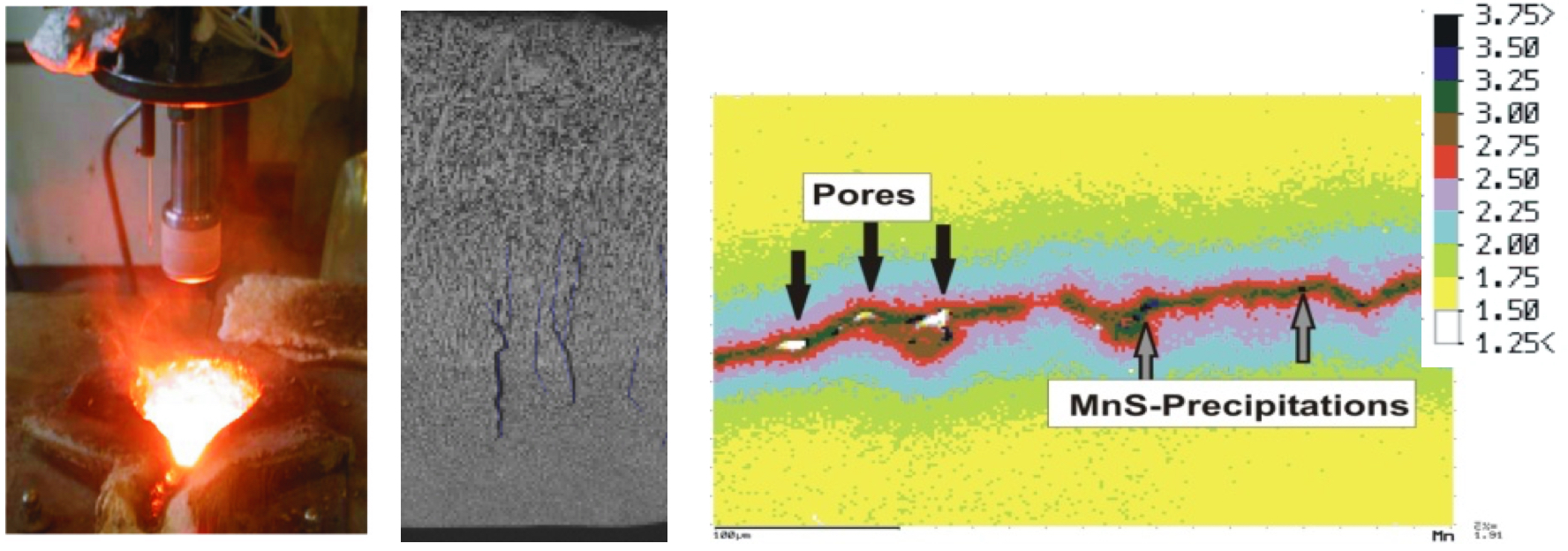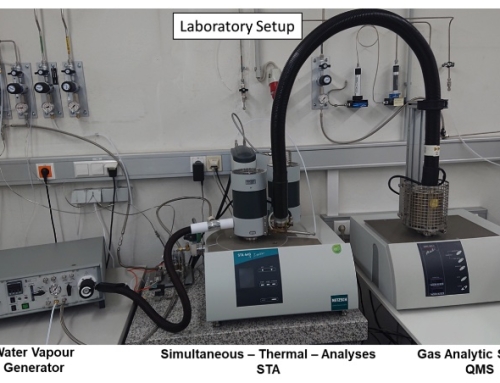The development of new alloying concepts, the modification of production routes due to the de-carbonization of steelmaking and last but not least, increasing quality demands will additionally stimulate research activities on high-temperature oxidation.
During steel production and processing, the product surface is exposed to temperatures up to 1250 °C and a wide variation of oxidizing atmospheres. Generally, high-temperature oxidation phenomena may be divided into external and internal. External oxidation describes the scale formation and the resulting loss of material. Various internal oxidation mechanisms like intergranular oxidation or phenomena like liquid metal embrittlement can be observed, especially in alloyed steels or steels contaminated by tramp elements. This may lead to essential quality losses of the later product. In order to sustainably improve the quality of the products and to avoid expensive, time-consuming post-processing, a deeper understanding of oxidation mechanisms and how different parameters influence them is crucial.
At the Chair of Ferrous Metallurgy, a strong focus is placed on the practical investigation of various oxidation phenomena and their subsequent influence on surface quality. The IMC-B test directly connects the influence of high-temperature oxidation with surface crack formation. Additionally, oxidation experiments can be performed by means of simultaneous thermal analysis under perfectly controlled laboratory conditions to examine selected phenomena individually.
The obtained knowledge serves as a basis for defining critical and non-critical test parameters, enabling the operator to produce high-quality products.




The prevention of surface damage is an important aspect during the production process of continuous cast products, since the deletion of these defects is associated with high costs. An economical production of high quality products therefore requires an optimal production process. This assumes better knowledge of mechanisms that lead to crack initiation – which represents a main goal of this research field.
Since 2007, research programs regarding surface crack phenomena stand in the focus of several K1-MET projects, Comet-K2 projects and company collaborations.
Amongst the efficient production of high quality products a special focus lays on the digitalisation of the continuous casting process. The goal is an online defect-risk model, which predicts the susceptibility for casting defects to appear and automatically adjusts the casting parameters to less critical conditions in order to prevent damage of the material.
Several experimental facilities and software products are used to deal with variable projects regarding the surface quality of casted and rolled products. A special focus lays on the IMC-B test. It presents a unique benchmark experiment which is used for investigations of the susceptibility to surface crack formation under continuous casting conditions. The definition of critical and non-critical testing parameters enable the steel producer to avoid or support conditions in the continuous casting machine in order to prevent surface cracks on the semifinished product. This saves costs, process capabilities and lowers the risk for a non-detected defect on a finished hot rolled product.
Latest Publications:
https://onlinelibrary.wiley.com/doi/10.1002/srin.202000234
https://www.mdpi.com/1996-1944/13/10/2281
BHM – DOI 10.1007/s00501-019-00902-0

Our working group has 25 years of experience in research on “hot tearing” in continuous casting of steels. The phenomenon of hot tearing was – and is still today – investigated in collaboration with several company partners, among them Primetals Technologies and voestalpine Stahl.
The so-called “Submerged Split-Chill Tensile” – test is a unique experiment for the in-situ simulation of hot tearing. Based on experimental results and comprehensive investigations on cast slabs, hot tearing was identified as a segregation phenomenon. Thus, research on micro-segregation was intensified during the last years by applying state-of-the-art thermodynamics.
Our concept of hot tearing analysis includes
- the numerical analysis of solidification in casting machines,
- the metallographic characterization of hot tears and hot tear segregations in cast semis,
- the analysis of micro-segregation for even high-alloyed steel grades
- and finally the experimental characterization of deformation limits for nearly all conceivable steel grades.
This combination of methods is worldwide unique.
Selected Publications
Experimental und numerical investigations on hot tearing during continuous casting of steel
Hot tear segregations as quality decisive factor for advanced steel grades





